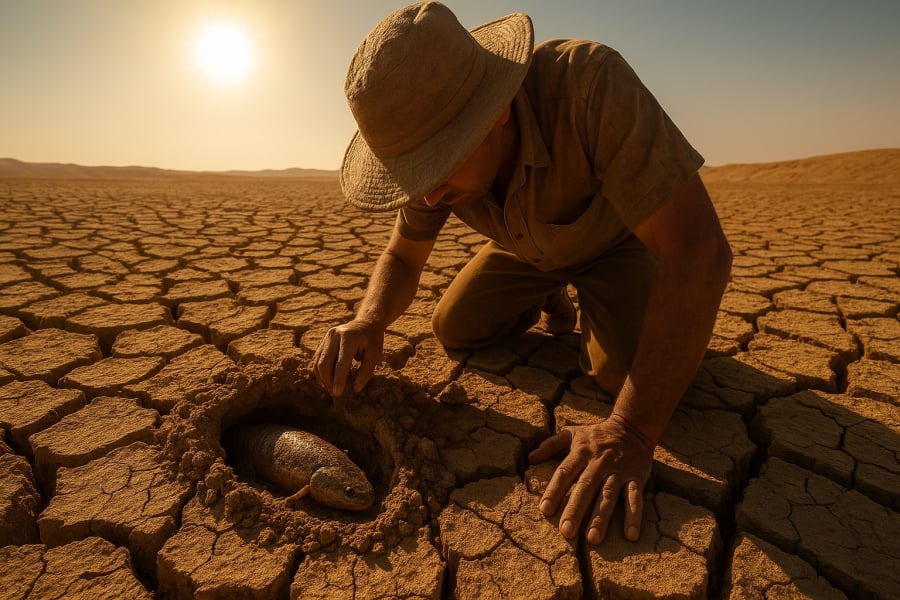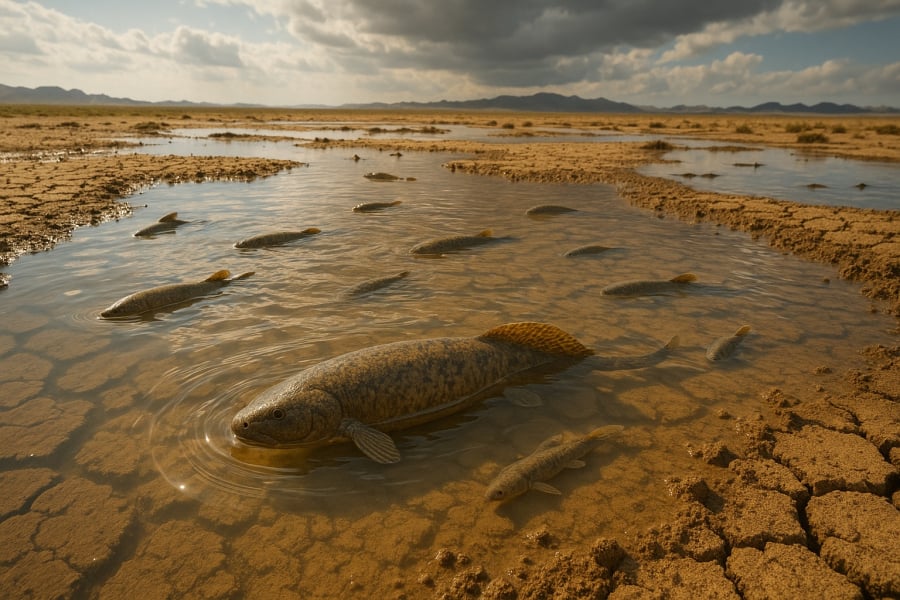The Mystery of the “Slumbering” Fish in the Desert
In arid deserts such as those in Africa and South America, where one might expect only sand and scorching sun, lies a wondrous creature – the African lungfish (Protopterus). Instead of dwelling in brimming lakes, they hide themselves beneath cracked, dry mud, awaiting the arrival of heavy rain to spring back to life.
Their unique ability lies in creating a sticky cocoon around their bodies and entering a state of aestivation – barely breathing, eating, or moving. And they can remain in this state for up to five years.
In an article for National Geographic, researchers recounted their astonishing discovery in the Chad desert: “We dug up hard, dry mud and found a living fish inside – it was beyond imagination.”

When the Rain Comes, the Desert Awakens
The first rain after years of drought brings not just water – it awakens a world that seemed to be slumbering.
As the rain pours, the mud melts, the sticky cocoon dissolves, and the lungfish begin to move, breathe, and swim as if nothing had happened. They quickly reproduce to ensure the continuation of their species, knowing that their life cycle may once again enter a period of “aestivation” at any time.
This phenomenon is not unique to Africa. A study published in the journal Science revealed that “some fish species in arid South America have also evolved the ability to produce special enzymes that slow protein breakdown, enabling them to survive in water-scarce environments.”

Lessons from Nature’s Resilience
You may wonder: “If a fish can survive without water or food for five years, is it still a fish?” But these tiny creatures prove that existence itself is a testament to strength.
Biologists view the lungfish’s ability to aestivate as a remarkable demonstration of nature’s evolution. Rather than opting for an easy existence, they have developed extraordinary adaptive mechanisms to survive in the harshest of conditions – where there is no water, no food, and no signs of life for years on end.
Just as these fish sometimes need to “hibernate,” so too do we as humans experience periods of stagnation in our lives. There are times when we feel stuck, unmotivated, and unable to progress. But, like the fish buried in the parched earth, all we need is a rain shower – an opportunity, a glimmer of hope, or a helping hand – to spring back to life with renewed vigor.
From Nature’s Tale to Life’s Reflections
The story of the fish that survives for years without water is not only scientifically intriguing but also evokes a profound emotion – one of endurance, hope, and rebirth.
You may find yourself in a similar situation, feeling stuck in the “dry mud” of life, awaiting your own rainstorm. But remember, the power to rebound lies within you. Just like the tiny fish, you don’t need something monumental – just one timely moment, and you’ll find yourself moving forward again.






























